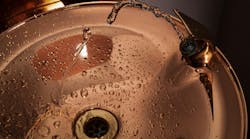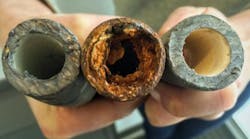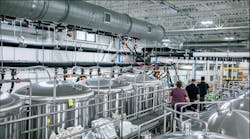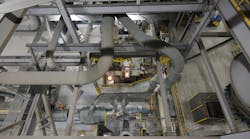In January's Engineering Green Buildings column (“Water-Conservation Myths, Realities”), I took on a couple of myths about water-efficient toilets and attempted to dispel them with a dose of reality. In that column, I examined toilet fixtures. Now, I want to explore a little further and talk about two additional issues also wrapped in a myth or two.
Myth: “Double-flushing a water-efficient toilet eliminates water savings.”
Reality: Double-flushing has been around since the flush toilet was invented. It occurred with the 5-gal. toilet of 25 years ago, the 3.5-gal. toilet of 15 years ago, and the 1.6-gal. toilet of 10 years ago. It is interesting to note, however, that when customers are surveyed about their satisfaction with new 1.6-gal., high-efficiency toilet fixtures, a majority say they double-flush the same number of times or fewer with their new efficient fixture than with their old water waster.
During the 1990s, water utilities studied more than 20,000 residential-toilet replacements in which water-wasting 3.5- and 5-gal. fixtures were replaced with first-generation 1.6-gal. fixtures. The field studies, which tracked actual water use, clearly showed that, irrespective of the double-flushing that occurred with the old and new fixtures, daily water consumption declined an average of 22 gal. per toilet in single-family dwellings and 40 gal. per toilet in multifamily dwellings. Remember, these first-generation 1.6-gal. tank-type toilets did not perform as well as current models do. Second- and third-generation fixtures perform even better and experience less double flushing and greater water savings.
Myth: “Sensor-activated faucets are more water efficient than manual faucets.”
Reality: I have yet to see an independent scientific study that validates the water-efficiency claims of sensor faucets. On the other hand, there are two studies that demonstrate manual faucets are more efficient than sensor-activated faucets. One of these studies showed a 58-percent increase in water use when a manual faucet was replaced with a sensor faucet. These studies can be downloaded at www.cuwcc.org/faucets_showerheads.lasso. Reports on faucet-installation studies in California and Florida also will be posted at www.cuwcc.org when they become available.
About two years ago, a manufacturer of sensor-activated faucets made a presentation to more than 100 members of a water-conservation group. During his technical talk, he claimed that sensor faucets save 70 percent more water than manual faucets. When questioned about how he had developed that number, he admitted that he only was parroting what a competing manufacturer had stated. He had no information to substantiate his claim, and the gathered members were dismayed that this manufacturer was asserting such savings claims to architects, engineers, green builders, and others.
Now, do not get me wrong. I have great respect for fittings and fixture manufacturers. They earnestly seek out ways to reduce unnecessary water use through technology and creativity. But, occasionally, the claims seem too good to be true. So, the moral of the story is: Do not believe all that you hear. Whatever the product, be a skeptic, ask questions, and look for a scientific basis behind the efficiency claims.
John Koeller is a registered professional engineer with extensive experience with water-efficient technologies and products. Nationally recognized as a specialist in these fields, he is a consultant to numerous North American water authorities and private-sector firms. He serves with various standards organizations and is an active contributor to various regional and national green-building initiatives.








